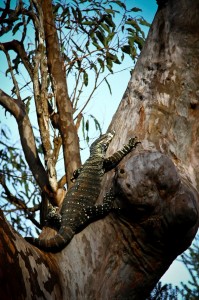Sharing and Caring for Native Animals around your Bushland Property
Native animals, like possums, bandicoots, lizards, and birds have their homelands changed by human activities constantly. We probably don’t realise how much we impact the local environment and the life it supports through simply leading the lives we lead. Even our own pets can pose a threat to local wildlife.
By declaring Wildlife Protection Areas in Bushland Reserves, Hornsby Shire Council is helping to conserve the unique biodiversity of the region.
By simple things like walking your dog on a leash and keeping your cat on your property and inside at night, you can reduce the number of native animals disturbed, maimed or killed. When in the bush, use walking tracks, leave bush rock and fallen timber in place and never drop garden waste in or around bushland.
To attract native wildlife use local native plant species. Trees, shrubs, grasses and groundcovers work together to give shade, shelter, protection and food and should be planted together, particularly for smaller birds as they rely on shrubs to flee in times of danger.
Old and dead trees offer nesting places to a wide range of animals and should not be removed, if possible. It can take up to 100 years for a nesting hollow to form, so if you are concerned about how safe a dead tree is, call on an arborist for advice. If you haven’t any old tree nesting sites available to you, you can use nesting boxes for bats, possums or birds.
Water is vital to all living things: protect your dams and creeks from sewage, animal waste, chemicals and physical disturbance. Farm animals should never have direct access to water ways. Use native vegetation along waterways to protect the banks and water quality. Never release fish or aquatic plants into local creeks or dams.
Also, see our articles on looking after Microbats and providing Nesting Boxes



